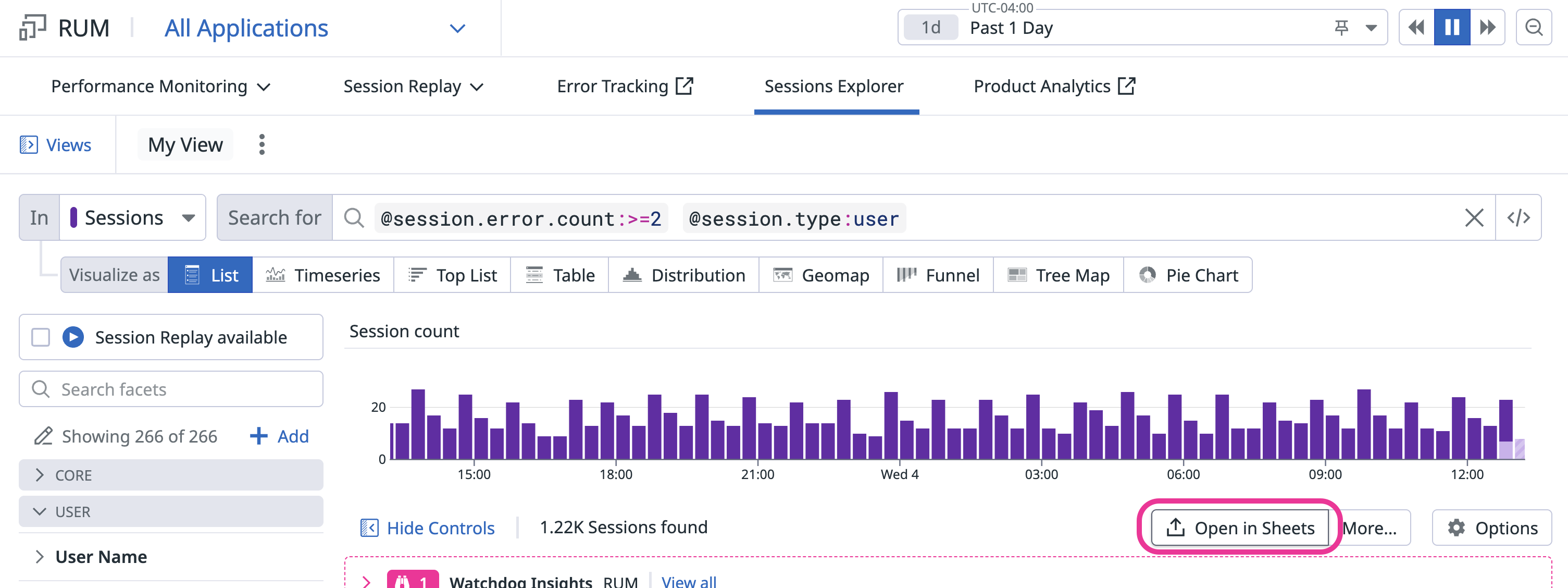- 重要な情報
- はじめに
- 用語集
- Standard Attributes
- ガイド
- インテグレーション
- エージェント
- OpenTelemetry
- 開発者
- Administrator's Guide
- API
- Partners
- DDSQL Reference
- モバイルアプリケーション
- CoScreen
- CoTerm
- Remote Configuration
- Cloudcraft
- アプリ内
- ダッシュボード
- ノートブック
- DDSQL Editor
- Reference Tables
- Sheets
- Watchdog
- アラート設定
- メトリクス
- Bits AI
- Internal Developer Portal
- Error Tracking
- Change Tracking
- Service Management
- Actions & Remediations
- インフラストラクチャー
- Cloudcraft
- Resource Catalog
- ユニバーサル サービス モニタリング
- Hosts
- コンテナ
- Processes
- サーバーレス
- ネットワークモニタリング
- Cloud Cost
- アプリケーションパフォーマンス
- APM
- Continuous Profiler
- データベース モニタリング
- Data Streams Monitoring
- Data Jobs Monitoring
- Data Observability
- Digital Experience
- RUM & セッションリプレイ
- Synthetic モニタリング
- Continuous Testing
- Product Analytics
- Software Delivery
- CI Visibility (CI/CDの可視化)
- CD Visibility
- Deployment Gates
- Test Visibility
- Code Coverage
- Quality Gates
- DORA Metrics
- Feature Flags
- セキュリティ
- セキュリティの概要
- Cloud SIEM
- Code Security
- クラウド セキュリティ マネジメント
- Application Security Management
- Workload Protection
- Sensitive Data Scanner
- AI Observability
- ログ管理
- Observability Pipelines(観測データの制御)
- ログ管理
- CloudPrem
- 管理
Analyze RUM Sessions Using Sheets
このページは日本語には対応しておりません。随時翻訳に取り組んでいます。
翻訳に関してご質問やご意見ございましたら、お気軽にご連絡ください。
翻訳に関してご質問やご意見ございましたら、お気軽にご連絡ください。
Overview
Datadog Sheets is a spreadsheet tool that that you can populate with Datadog data and analyze without requiring technical expertise. This guide provides a walkthrough for analyzing Real User Monitoring (RUM) sessions using Sheets. This guide explains how to:
- Create and manipulate tables within Sheets.
- Enrich your RUM session data with additional metadata using Reference Tables.
- Perform detailed analysis to identify high-error sessions and understand their impact on premium users.
Creating a table in Sheets
To start your analysis, create a table of RUM sessions in Datadog Sheets:
- Start from the RUM Sessions Explorer.
- Build a query to filter sessions with specific characteristics. For instance, to focus on user sessions that have encountered two or more errors, use the following query:
@session.error.count:>=2 @session.type:user - Click on Open in Sheets to create a new table with your filtered RUM sessions data.
Uploading data to Reference Tables
To enrich your RUM sessions data with additional metadata, such as identifying premium users or associating users with specific teams, use Reference Tables. Upload external data with the following steps:
- Prepare a CSV file containing additional metadata. For example, your file might include columns for user IDs, premium status, and team information.
- Navigate to Reference Tables and click New Reference Table +.
- Upload the CSV file and define the primary key for the table.
For more information, see the Reference Tables documentation.
Enriching RUM data with lookups
- In your Sheets interface, click Add Lookup at the top of the page.
- Select the Reference Table you uploaded and specify the common column, such as User ID, to match records.
- The Lookup function adds the relevant metadata from the Reference Table to your RUM sessions table.
Using pivot tables for analysis
Pivot tables help you summarize and organize large datasets to find patterns and trends.
- From an existing spreadsheet that already has a table of data, click Add Pivot Table.
- In the Rows section, select the dimensions you want to analyze, such as the User name.
- In the Calculations section, choose the dimensions for calculations, like sum, average, count, min, and max.
Example use case: Analyzing premium user errors
You have a web application and want to understand how errors are impacting your application’s premium users. Follow these steps to analyze RUM sessions, enrich your data with additional user information, and gain insights into how your premium users are impacted by errors. Use sheets to help you make data-driven decisions to improve user experience and address issues more effectively.
Filter RUM Sessions
Start from the RUM Sessions Explorer and build a query to filter sessions with two or more errors. For example:
@session.error.count:>=2 @session.type:userClick Open in Sheets to create a table with the filtered sessions.
Enrich Data
- Upload a CSV file to a Reference Table with additional user metadata (such as premium status or team).
- Use the
Lookupfunction in Sheets to add the user metadata about premium status to your RUM sessions table.
Analyze with Pivot Tables
- Create a pivot table to count the number of errors per premium user.
- Summarize the data to understand the distribution of errors among premium and non-premium users.


